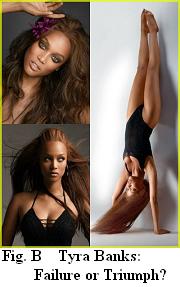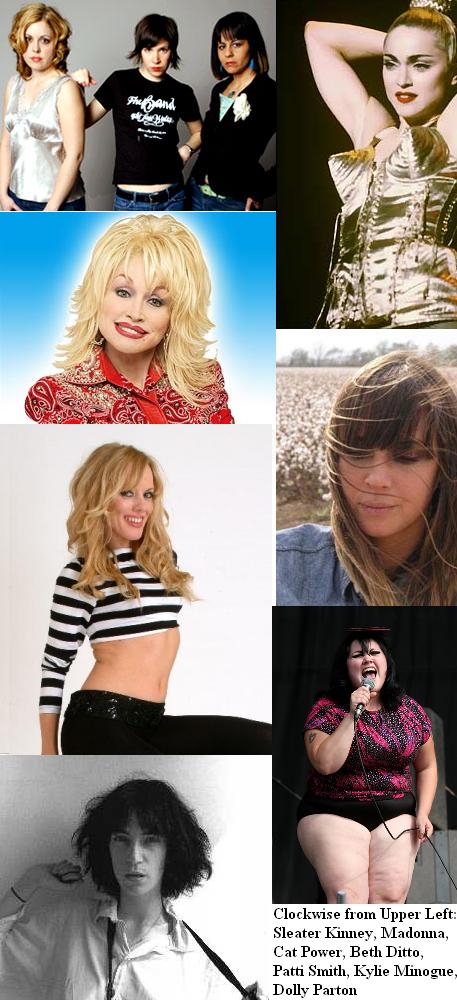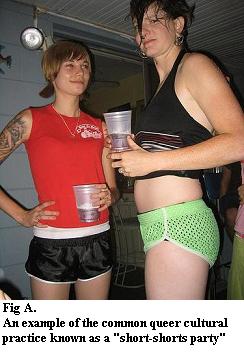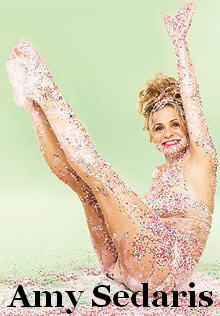Jon, who wrote this blog back in the day, is now studying Fashion Marketing at Parsons.
Check out his new fashion blog at : http://jonatparsons.wordpress.com
Jon, who wrote this blog back in the day, is now studying Fashion Marketing at Parsons.
Check out his new fashion blog at : http://jonatparsons.wordpress.com
Posted in Uncategorized | Leave a Comment »
 Since the dawn of second wave feminism and the civil rights movement, queer people (much like other marginalized groups) have learned to question the popular media around them. Queer people have collectively realized that those with control over what we see and hear never have the best interests of disenfranchised and minority people in mind.
Since the dawn of second wave feminism and the civil rights movement, queer people (much like other marginalized groups) have learned to question the popular media around them. Queer people have collectively realized that those with control over what we see and hear never have the best interests of disenfranchised and minority people in mind.
As a result, queer people find themselves constantly having to evaluate whether or not the media they absorb is in reality damaging to their community. Since few gay specific media resources critically analyze much of anything besides resort towns and fashion (future post), queers are forced to turn to non-queer specific magazines such as Adbusters and Bitch (Fig A.).
Anthropologists studying queer culture have discovered a common trend in which queer people are most critical of the pop culture entertainment that they most enjoy to view.
 An excellent example of this is the popular television show “America’s Next Top Model”. All queer people watch and enjoy this show as a general rule. The frequency with which queers watch this show is only challenged by the frequency with which they ask, “Tyra Banks: feminist triumph or feminist failure?” (Fig. B)
An excellent example of this is the popular television show “America’s Next Top Model”. All queer people watch and enjoy this show as a general rule. The frequency with which queers watch this show is only challenged by the frequency with which they ask, “Tyra Banks: feminist triumph or feminist failure?” (Fig. B)
It is important to remember that the motivation behind this analysis is based as much in the need for cultural checks and balances as it is in the very singular desire to alleviate personal guilt over the conflict between belief and action. (power sentence!!) Queer people love to hate on the stuff they love (future post), and feminist/leftist belief systems simply provide a way in which to do this intellectually. Thus, queer people are given yet another way to take the moral high ground over heterosexuals (whoa, another future post!) without having to actually sacrifice any form of “status quo” entertainment absorbtion. Queers will defend this lifestyle contradiction by simply stating that they only watch trash in order to critique it.
DON’T FORGET TO READ MY MAIN BLOG, GAYCONDO!
Posted in bi, gay, homo, lesbian, queer, stuff people like, stuff queer people like, trans | Tagged adbusters, bitch, bitch magazine, media, top model, tyra banks | 7 Comments »
After several months of research, a recent study was finally released that officially stated what many had assumed for years: at any given point in time, roughly 80% of queers have identical haircuts. Though it is not known what the exact root of this phenomena is, many anthropologists have hypothesized that it may be an evolutionary trick developed to aid queers in spotting each other in a crowd.
Several researchers have also hypothesized that similiar haircuts are simply an advanced form of queer merging (future post). For those new to studying queer culture, merging is the queer term for the common practice of queer couples becoming more and more visually similar the longer they remain coupled. Many anthropologist’s have wondered, “If two queer people in close proximity over time begin to physically appear the same, why not entire cultures of queers?”
Since the turn of the century, numerous queer haircuts have come in and out of popularity. From roughly 2000-2003, the faux-hawk was quite popular (fig. A). It was eventually phased out by queers when it was adopted by heterosexual male clubbers and American Idol contestants. The next style largely adopted by queers appeared from 2004-2007 in the form of the fashion mullet (fig. B), which only recently fell out of style, as a result of Christian Siriano’s appearance on the TV show Project Runway, which was when the style officially “jumped the shark” . The newest (and tamest) development in queer hairstyles emerged in late 2007, and is called the side sweep (fig. C). Little is known of it’s origins so far.
When examining these styles along a timeline of their popularity, a trend seems to emerge. Queer haircuts expand and become more severe, until they eventually (and quite literally) collapse on themselves. Fashion mullets are simply extreme versions of faux-hawks. And what is a side sweep but simply a flattenned and deflated fashion mullet? Anthropologists studying these trends have predicted that the next evolutionary step will most likely be something “puffy” (fig. D), and is expected to arrive by summer 2009.
MAKE SURE TO VISIT MY MAIN BLOG, GAYCONDO!
Posted in anthropology, bi, comedy, gay, homo, lesbian, queer, stuff people like, stuff queer people like, trans | Tagged evolution, fashion mullet, faux-hawk, haircut, mullet, side sweep | 6 Comments »
While growing up, all queer people feel a sense of isolation from those around them, whether it be real or simply in their heads. As a result, they are commonly drawn to creating connections with people that are also percieved as being different. However, since queer youth are also attracted to unnecessary drama, they almost always choose outsider friends who, in hindsight, are emotionally unstable. These friends are frequently self destructive, and cling to anyone willing to deal with them.
Anthropologists have studied and labeled the two normative Types that are most commonly seen befriending queer people:
This is the most common form of an emotionlly unstable bestfriend. This form can be easily identified by it’s unfashionable appearance and complete lack of social skills. In addition, Type I friends are frequently very intelligent, or at least percieved that way by others.
Type I’s are willing to befriend queer youth because they are the only people lower down on the social pecking order. Since Type I’s are incapable of making dynamic and interesting life choices of their own, they cling with a death grip to the vivacious queer people around them. As a result, Type I friendship’s quickly become uncomfortably codependent and smothering.
This is the other most commonly observed form of emotionally unstable best friend. Unlike their Type I counterparts, they are are extremely social. They are at every party and as a result are well known, but not exactly “popular”. They can be identified by their outlandish fashionable attire and their addictive personalities.
Type II’s as a rule are always users of excessive drugs and alcohol. In addition, they are almost always the first to introduce queer people to drug use.
In the beginning, most queer people see them as being rebellious outsiders. They experience their friendship with Type II’s as an exciting adventure. Unfortunately, queer people quickly realize that the “adventure” has morphed into a situation in which they have become emotional and physical caretakers for their sociopath-leaning Type II friends.
It is important to note that while both Types of self destructive best friends are always straight, they are prone to emotionally abusive bisexual experimentation with the queer people around them. In fact, this is often the first sexual experience of many queer people.
These relationships rarely last longer than a few years due to the high rate at which emotionally unstable friends tend to be shipped off to alternative high schools and never heard from again.
MAKE SURE TO VISIT MY MAIN BLOG: GAYCONDO!
Posted in bi, gay, homo, lesbian, queer, stuff people like, stuff queer people like | Tagged friendship, My So called life, queer | 9 Comments »

While it is true that queer people appreciate a wide variety of musical stylings, ranging from country to punk to techno to folk music, a reccuring trend emerges in each of these musical/cultural queer subsets.
Queers tend to be overwhelmingly drawn to strong female performers. Even in musical genres largely dominated by men (punk, rock, country), queers will be found in the highest numbers at shows being headlined by women.
This preferential leaning is found in all queer gender identities. After several years of research, anthropologists have linked this trend to another normative pattern in queer culture: rooting for the under dog (upcoming post). Queers feel a high level of shared identity with all other marginalized people, and therefore commonly have an emotional connectivity with those who have been deemed “outsiders” (aka Any women, doing anything creative. Ever).
In addition, the not yet proven (though frequently studied) hypothesis that all queer people grow up with an akward/emotionally unstable female best friend (another future post) is speculated to be an early catalyst towards the appreciation of lady made music. These friends almost always introduce queers to their first favorite band ( usually Cat Power ) before the friend’s akwardness transitions into craziness and they get sent to an “alternative school” where they are never heard from again.
If you find yourself in a situation in which you must discuss music with a queer, it is advisable that you simply nod approvingly of everything they say, and then when it is your turn to speak, say one of the following:
WANT MORE? CHECK OUT MY MAIN BLOG: GAYCONDO!
Posted in bi, gay, homo, lesbian, queer, stuff people like, stuff queer people like, trans | Tagged Beth Ditto, Cat Power, Dolly Parton, Kylie Minogue, Madonna, music, Patti Smith, Sleater Kinney, women | 10 Comments »
 Over the several decades in which cultural anthropologists have been studying queers, none has been able to explain to connection between non-normative gender/sexual expression and the strong desire to wear short-shorts.
Over the several decades in which cultural anthropologists have been studying queers, none has been able to explain to connection between non-normative gender/sexual expression and the strong desire to wear short-shorts.
Though the direct correlation is still being researched, what is known is that queers will find any excuse to where short-shorts. Occasions in which this apparel choice occurs vary.
Queers are commonly known to be the record holders of the “shortest shorts at the gym” award. Also, sports of choice for queers are frequently those in which short-shorts are considered acceptable attire (gymnastics, kickball, track&field, golf).
However, the territory in which queers are most likely to be spotted partaking in this particular cultural activity is at any costume party. Several thematic variations exist, but the most common form taken is as any stereotypical type of person from the 70’s including but not limited to: police officer’s, roller-derby girls, biker’s, go-go dancers, hippies, or people with mustaches.
The most highly developed form of this cultural activity, the queer short-shorts party (fig. A), can be wittnessed only in densely queer geographic areas (i.e. Portland, New Orleans, New York and San Francisco).This particular thematic form of celebration forgoes the umbrella term of “costume” used by non-queers, and simply requires that participants come as themselves, except with an inseam of less than 3″.
If you find yourself invited to one of these parties, it is important to remember that any non-queer sensabilities you may have about appropriate attire must be ignored. If you are unsure of the correct garment to be worn, a fail safe choice is to attend in your underwear (excluding boxershorts) only. This will not only help you to blend in, but it will gain you the respect of your queer fellow celebrators for your overall outlandishness.
Some ogling is to be expected, but relative safety can be maintained by avoiding the dance floor entirely.
FOR MORE, CHECK OUT MY MAIN BLOG: GAYCONDO!
Posted in anthropology, bi, comedy, gay, homo, lesbian, queer, short-shorts, stuff people like, stuff queer people like, trans | Tagged a anthropology, queer, short-shorts, shorts, stuff | 5 Comments »
Queer people, like most others, are big appreciators of pop culture. However, it is in their interpretation of film, television shows, and books where they differ from their hetero/gender normative counterparts.
When attempting to find deeper meaning in the cinematic portrayal of a story, queers tend to project their own experiences (frequently those of “otherness” and “coming out”) onto the experiences and motivations of the characters.
An excellent example of this is a common reading by queers of the “X-Men” movie trilogy as being a story about institutionalized queer oppression in America. The story of the film is seen by queers as a call to arms in the social war for equality.
To most straights however, it is a film about super-powers and blowing stuff up.
If you find yourself enjoying a film with a queer, and all of a sudden they turn to you teary eyed saying “I totally understand how [insert outsider character here] feels…. It’s so hard being different…. I hate my parents!”, it is best to nod in agreement, place your arm around them meaningfully, and pray to god that there is a distraction from the emotional storyline, something like an explosion or mutant fist fight.
FOR MORE, CHECK OUT MY MAIN BLOG: GAYCONDO!
Posted in film, gay, homo, lesbian, movies, queer, stuff people like, stuff queer people like, subtext, x-men | Tagged movies, queer subtext, stuff people like, stuff queer people like, x-men | 4 Comments »
 Though most queer people would have you believe that they are empathetic and politically correct, truthfully they all adore off color jokes that derive there humour at the expense of marginalized peoples. IN FACT, their overriding liberalism is how they justify this love affair with the offensive. They are so liberal, that of course they can clearly spot harmless irony! Any marginalized group will do….
Though most queer people would have you believe that they are empathetic and politically correct, truthfully they all adore off color jokes that derive there humour at the expense of marginalized peoples. IN FACT, their overriding liberalism is how they justify this love affair with the offensive. They are so liberal, that of course they can clearly spot harmless irony! Any marginalized group will do….
Fags? Why Not!
Retarded People? Go for it!
Black people? Hell yes!
Jews? For sure!
Women? Duh!
It is important to always remember that the acceptablity of this humour exists in direct relation to the general awkwardness of the lady comic that is making the jokes. Use of make-up, prosthetics, and baggy clothes to enhance awkwardness is also acceptable in queer culture.
Don’t forget, it is never ok to talk to a queer person jokingly about this style of humor unless you are either: a.) queer b.)straight but not white c.) a petite spunky jewish girl and/or redhead.
The important thing to keep in mind is that a veil of minority solidarity is being used here. Queers need it in order to pretend that laughing at racist/able-ist/sexist/homophobic/anti-semitic/size-ist/pro-addicition jokes is about solidarity and togetherness instead of just making fun of stereotypes.
Expect this argument to be used if you intend to question a queer person on the appropriatness of their laughter. It is impossible to argue against minority solidarity, so it is advisable that you simply change the subject.
WANT MORE? CHECK OUT MY MAIN BLOG, GAYCONDO!
Posted in amy sedaris, comedy, gay, homo, lesbian, queer, sarah silverman, stuff people like, stuff queer people like | Tagged fag, faggot, gay, homo, lesbian, queer, stuff people like, stuff queer people like | 5 Comments »